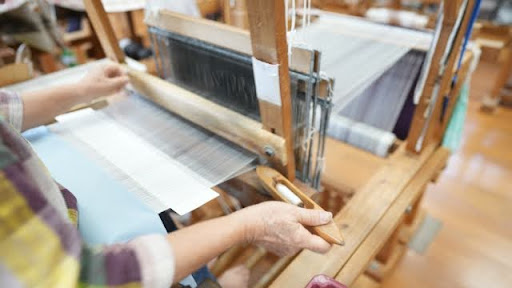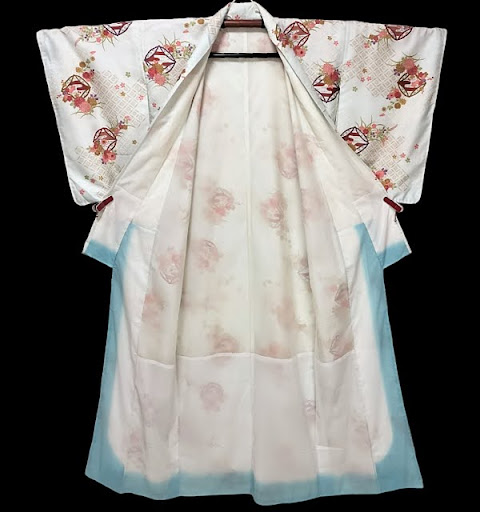“KIMONO”, a traditional Japanese garment with long, tubular sleeves, is more than just clothing. It’s a revered craft that embodies Japanese pride.
Crafted from a single piece of fabric and secured with an obi sash, kimonos vary in material, pattern, and wearing style, reflecting their intended use and formality. Even in today’s era of Western-style attire, people still choose to wear kimonos for special occasions such as celebrations, and both children and adults enjoy wearing ”YUKATA” during summer festivals.
KIMONO has evolved alongside Japan’s rich history, becoming increasingly refined over time. In this article, we delve into the captivating world of KIMONO, exploring its history, allure, and contemporary significance. Prepare to be enchanted by the profound artistry and cultural heritage embodied in KIMONO, a garment revered worldwide.

1.History of Kimono
The Enduring Beauty of Kimono

With a history stretching back over 2,300 years, the kimono is a garment steeped in tradition. Initially, simple attire suited for hunting and gathering was the norm.
The kimono as we know it emerged during the Heian period, approximately 1,300 years ago. This era witnessed the flourishing of a vibrant kimono culture, particularly among the aristocracy.
By the Edo period, some 400 years ago, the kimono had become widely adopted as everyday wear. Commoners adorned themselves in kimonos that aligned with their lifestyles, reflecting their individuality.
The Meiji period, around 160 years ago, ushered in an era of Westernization, transforming the kimono from everyday attire to a garment reserved for special occasions. Today, kimonos are often seen in formal settings and cultural events, embodying the essence of Japanese traditional culture.
2.Exploring the Beauty of Kimono
<Exquisite craftsmanship to be savored with all five senses>
Kimono can be broadly categorized into two main types: dyed kimonos and woven kimonos.
dyed kimonos

Dyed kimonos are widely used for both formal occasions, such as weddings, and everyday wear. Numerous dyeing techniques are employed, with “YUZEN dyeing”, renowned for its painterly artistry, standing as a prime example. Its intricate process involves around 20 steps, each demanding the expertise of skilled artisans. Some dyed kimonos are even produced under a strict division of labor, requiring the involvement of numerous artisans to bring a single kimono to life.
woven kimonos

Woven kimonos, also known as “TSUMUGI” are a type of kimono where silk threads (tsumugi ito) are dyed before being woven into intricate patterns. These kimonos are often worn as everyday wear or stylish attire.
Tsumugi is a representative style of woven kimono, typically made from silk, cotton, or hemp. Woven kimonos are produced in various regions across Japan, each with unique characteristics reflecting the local climate and traditions.
Among these, “YUUKI TSUMUGI”, produced from hand-spun silk threads in Ibaraki and Tochigi prefectures, stands out as a prime example. It has earned UNESCO’s Intangible Cultural Heritage status. Renowned for its lightness and warmth, Yuuki tsumugi is crafted from true cotton, earning it the title of “the finest tsumugi.”
<Kimono Motifs and Their Symbolism>
Kimono designs are a captivating blend of nature-inspired motifs and vibrant colors, each pattern carrying deep symbolic meaning. Let’s explore some of the most common kimono motifs and their significance.
Typical patterns and their meanings: flowers, plants and creatures
- Cherry blossoms: Japan’s quintessential flower, are a beloved motif in kimono designs. However, adorning oneself in a cherry blossom kimono comes with certain etiquette. For instance, kimonos featuring cherry branches are traditionally worn during cherry blossom season, while those adorned solely with petals can be worn throughout the year. These unspoken rules reflect the Japanese appreciation for nature’s transience and the importance of aligning one’s attire with the seasons.

- Asanoha:Also known as the hemp leaf pattern is a traditional Japanese motif composed of interlocking hexagonal shapes. Because hemp leaves grow fast and straight, they are used to ward off evil and to wish for the healthy growth of children. Hemp has also been considered a sacred plant since ancient times, and is considered auspicious as a KIMONO pattern.

- Crane:The crane is a auspicious bird symbolizing longevity and conjugal bliss, and many kimonos have patterns depicting cranes flying in the air, and are often worn on festive occasions.

<Excellent functionality>

Kimonos are incredibly versatile and can be worn by people of all ages and sizes. This is because they’re like a big tube of fabric that drapes comfortably around your body, no matter your shape. Plus, you can adjust the fit at the waist with a wide sash called an obi, making it even more adaptable.
Kimonos are also great for all seasons. In the summer, you can wear just a single, lightweight kimono to stay cool. In the winter, you can layer up with several kimonos, from thin undershirts to thick outer robes, or even add a jacket called a haori for extra warmth.
<Sustainable Fashion>

Since KIMONO is made from a single piece of fabric, it can be re-tailored and re-dyed for long-lasting use.
For example, there are various methods of re-dyeing, such as “IROAGE”, in which color is simply poured over the fabric; “NUKIZOME” ,in which color is removed and re-dyed in a new color; and “MEHIKI”, in which the original pattern is dyed over the top in the desired color so that the original pattern is not hidden.
In addition, since KIMONO is often made of natural materials such as silk, hemp, and cotton, they have a low environmental impact.
In recent years, sustainable practices such as remaking KIMONO into clothing and accessories have been attracting attention.
With an increasing number of stores and events offering KIMONO dressing suggestions, KIMONO is becoming increasingly popular among the younger generation, and it can be said that KIMONO is a fashion item that not only carries on traditional Japanese culture, but also contributes to solving sustainability issues in today’s society.
KIMONO is more than just a garment; it is an embodiment of Japanese craftsmanship, cultural preservation, and environmental consciousness. Its timeless beauty and versatility invite exploration, offering a unique opportunity to experience the essence of Japanese culture. Embrace the allure of the KIMONO and discover a world steeped in tradition and refined elegance.
3.KIMONO fascinates the world

KIMONO attracts people from all over the world because of its beauty. KIMONO has been featured in movies, music, art, and many other fields, and its influence is expanding every year.
For example, foreign fashion brands are also incorporating KIMONO motifs into their designs. For example, famous brands such as Alexander McQueen and Vivienne Westwood have also introduced KIMONO collections.
KIMONO has also appeared in movies, TV dramas, and musical productions. For example, KIMONO is used as an important costume in the movies “The Last Samurai” and “SAYURI”. Various artists, including Madonna, have also worn KIMONO in music videos.
In addition, KIMONO-related events are held all over the world. For example, KIMONO exhibitions and KIMONO fashion shows are held in cities such as New York, Paris, and London.
Summary
KIMONO has the inherited techniques and charm that embody the Japanese sense of beauty and spirituality, as well as the elements required by modern society: sustainability. Kimono culture will continue to develop and connect people around the world.
Explore Japan with Shin Edupower
Shin Edupower offers a range of programs that connect students in India and Japan, foster educational collaborations, and provide opportunities for cultural immersion through study tours. If you are eager to delve deeper into Japan’s rich culture and traditions, please feel free to contact us.





